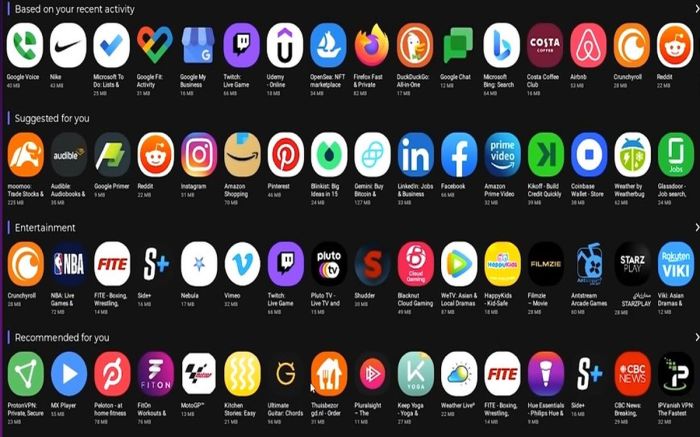Apps for cheaters android are a complex phenomenon. These tools, often shrouded in secrecy, reveal a fascinating and sometimes disturbing glimpse into human behavior. Motivations range from fleeting moments of desire to more intricate patterns of relationship breakdown. Features, from location tracking to discreet communication, often cater to a specific need or expectation. The potential for misuse is considerable, impacting various aspects of personal and professional lives.
Understanding the motivations, functionalities, and consequences is crucial to navigating this ethically ambiguous territory.
The exploration delves into the motivations behind these apps, examining the types of users, the common features desired, and potential scenarios for their use. This analysis further explores the different types of cheating activities these apps might support, offering examples of common functionalities. Furthermore, a critical look at security risks and vulnerabilities associated with such applications is provided. Finally, the ethical implications, potential societal impact, and real-world consequences are thoroughly examined.
The market trends, competitive landscape, and design considerations for such applications are also addressed. This comprehensive approach aims to paint a clear picture of the entire ecosystem.
Understanding the User Need
The search for “apps for cheaters android” reveals a complex tapestry of motivations, ranging from the playful to the potentially problematic. It’s a realm where curiosity, desperation, and even a desire for control intertwine. Understanding these underlying needs is crucial for crafting responsible and ethical solutions.A deep dive into the reasons behind this search uncovers a wide spectrum of potential user profiles.
Some might be seeking harmless entertainment, while others might be driven by a more serious desire to explore uncharted romantic waters. This exploration often delves into a realm where emotional needs and desires collide with societal expectations and norms.
Motivations Behind the Search
A variety of factors drive individuals to explore such applications. These include a desire for discreet communication, a need for anonymous connections, or perhaps a longing for emotional validation in a specific context. Some users might be looking for alternatives to conventional relationship dynamics, while others could be seeking opportunities for experimentation or emotional exploration. The motivations are as diverse as the individuals themselves.
Desired Features in Such Apps
Users frequently seek apps with specific functionalities. These often include features for discreet communication, secure file sharing, and options for anonymity. The need for seamless integration with social media platforms is also prominent. Furthermore, sophisticated encryption and robust privacy features are often highly sought after.
Scenarios for App Usage
These apps can be used in a myriad of scenarios. Some users might employ them for playful flirtation or casual encounters. Others might utilize them to engage in more serious explorations of romantic possibilities. Furthermore, these apps can be instrumental in discreetly navigating the complexities of relationships or seeking alternatives to traditional approaches.
User Profiles
The user profiles are as varied as the motivations. Some users might be young adults seeking experimentation. Others could be individuals exploring emotional independence. Further, there could be users who feel constrained by societal expectations and are seeking an alternative avenue to explore their desires. The user base is highly diverse.
Types of Cheating Activities
The applications could potentially facilitate various forms of cheating activities. These include emotional infidelity, physical infidelity, and discreet communication outside of existing relationships. The extent and nature of these activities vary greatly and are often determined by the individual user’s intentions.
App Characteristics and Functionality: Apps For Cheaters Android

These apps, while seemingly innocent, often serve as tools for circumventing rules and regulations. Understanding their capabilities and potential risks is crucial for mitigating the negative impacts they can have. Their design often blurs the lines between legitimate and illicit use, making detection and prevention challenging.Adapting common apps for malicious purposes often involves subtle changes to their fundamental functionalities.
The key lies in recognizing these subtle shifts and understanding the motivations behind their use. This knowledge is vital for developing effective countermeasures and strategies to combat the use of such tools.
Common Functionalities
Many apps designed for cheating leverage existing functionalities to achieve their goals. Messaging apps, for instance, can be used for covert communication, enabling participants to coordinate actions and exchange sensitive information. Location sharing apps, often intended for social purposes, can be repurposed to track targets or monitor locations. Photo editing apps, commonly used for image enhancement, can also be employed to alter evidence or manipulate images to conceal actions.
These examples highlight the versatility and adaptability of seemingly harmless applications.
App Types and Adaptations
The variety of apps available allows for diverse methods of cheating. Messaging apps, such as WhatsApp or Telegram, facilitate quick communication and the sharing of crucial information, especially in academic or professional settings. Location-based apps can assist in establishing the precise location of targets, crucial in some scenarios. Photo editing apps can alter images, potentially concealing evidence or fabricating information.
This versatility poses significant challenges for those attempting to identify and combat such illicit activities.
Security Risks and Vulnerabilities
The security risks associated with these apps are substantial. Encrypted communication channels can be used to conceal illicit activities, making detection difficult. Lack of proper authentication and authorization can lead to unauthorized access and data manipulation. Malicious actors can exploit vulnerabilities in the app’s design and functionality to achieve their goals.
Table of Cheating App Features
| Feature | Target Audience | Potential Risks |
|---|---|---|
| Covert Messaging | Students, employees, or individuals involved in unethical activities | Unauthorized communication, potential legal ramifications, academic/professional misconduct |
| Location Tracking | Individuals seeking to monitor targets or manipulate situations | Invasion of privacy, potential harm to individuals, legal implications |
| Image Manipulation | Individuals needing to alter or conceal evidence | Falsification of evidence, potential legal issues, damage to reputation |
| Data Extraction | Individuals seeking to gain access to confidential information | Violation of privacy, potential legal penalties, breach of security |
Ethical Considerations and Societal Impact
These apps, while seemingly offering convenience, raise significant ethical concerns. Their potential impact on individuals, relationships, and even society as a whole needs careful consideration. Navigating this complex terrain requires a balanced perspective that acknowledges both the potential benefits and the inherent risks.The allure of shortcuts can be seductive, but these apps often come with hidden costs. Ultimately, relying on them can undermine personal growth, ethical decision-making, and the very fabric of trust in our communities.
Ethical Implications of Cheating Apps
The design and use of cheating apps raise serious ethical dilemmas. These apps often blur the lines between acceptable and unacceptable behavior, leading to questions about academic honesty, personal integrity, and the very nature of fair play. These tools, while potentially providing a temporary solution, can have lasting negative consequences for the user and those around them.
Negative Consequences on Relationships and Education
These apps can damage trust and erode the foundation of relationships. When used in educational settings, they can undermine the value of learning and personal growth. Students may lose the motivation to study, and teachers may struggle to maintain the integrity of their classrooms. Furthermore, these apps often perpetuate a culture of shortcuts rather than fostering genuine understanding and achievement.
Potential Societal Impact
The proliferation of cheating apps could have far-reaching societal implications. Erosion of trust in institutions, a devaluation of hard work, and a decline in academic standards are potential concerns. Ultimately, this could affect the overall quality of education and the development of a well-informed and engaged citizenry.
Real-World Examples of Negative Consequences, Apps for cheaters android
Cases of cheating apps having detrimental consequences are emerging. In one instance, a cheating app was used in a high-stakes business negotiation, resulting in a loss of trust and damage to the reputation of a company. Another case involved a student who used a cheating app to complete a major project, but ended up failing to understand the material, ultimately hindering their learning experience.
These examples illustrate the potentially far-reaching and negative impacts of such apps.
Harms and Benefits of Cheating Apps
| Potential Harms | Potential Benefits |
|---|---|
| Erosion of trust in relationships and institutions | Temporary solutions to academic or professional challenges |
| Undermining personal integrity and ethical decision-making | Potential for efficiency in certain situations |
| Diminishing the value of hard work and genuine effort | Possibility of faster progress in certain fields |
| Decreasing academic standards and overall quality of education | Limited potential for quick problem-solving in specific situations |
| Promoting a culture of shortcuts rather than genuine understanding | Limited potential to address temporary knowledge gaps |
Market Trends and Competition

The cheating app market is a fascinating, albeit ethically complex, space. Understanding the trends and the competition is key to navigating this landscape. It’s a dynamic field, constantly evolving with new strategies and tactics emerging. We’ll explore the current state of play, highlighting major players and their approaches.The market is characterized by a constant push and pull.
Developers are always seeking innovative ways to enhance their apps, while users are equally eager to find the most effective tools. This constant interplay fuels the competitive environment and necessitates a deep understanding of user needs and emerging technologies.
Current Market Trends
The cheating app market is experiencing significant growth, fueled by the rise of online education and the increasing reliance on technology. Students, seeking shortcuts or ways to enhance their academic performance, are often drawn to these apps. This trend is further amplified by the pressure to succeed in today’s competitive educational environment. The market is also seeing a shift toward more sophisticated and discreet apps, designed to avoid detection.
Major Competitors
Several prominent companies are vying for market share in the cheating app sector. These companies often employ different strategies to attract and retain users, and they continuously adapt to evolving regulations and user demands. Their approaches vary widely, from offering comprehensive study materials to providing direct answers to specific questions. A thorough analysis of their strengths and weaknesses will illuminate the competitive landscape.
Competitive Approaches
Different apps employ various strategies. Some focus on providing extensive study materials and practice questions. Others concentrate on real-time assistance and answer-generating features. Some competitors may use a freemium model, offering basic features for free and charging for premium services. Others might emphasize anonymity and discretion.
There’s a clear spectrum of approaches, reflecting the diverse needs and expectations of users.
Strategies for User Attraction and Retention
Developers employ various strategies to attract and retain users. They focus on user experience, offering intuitive interfaces and personalized learning experiences. Marketing plays a critical role, with developers employing social media and targeted advertising campaigns. Promotions, referral programs, and providing helpful customer support all contribute to a strong user base. Ultimately, understanding and responding to user feedback is essential for continued success.
Competitive Analysis
| Competitor | Strengths | Weaknesses |
|---|---|---|
| StudyBuddy | Extensive study materials, personalized learning paths, user-friendly interface | Potentially high price, limited real-time assistance |
| AnswerHub | Real-time answer generation, quick access to solutions | Limited study materials, potential for plagiarism, security concerns |
| StealthSolutions | High degree of anonymity, advanced features for discreet use | Limited support, potential for security vulnerabilities, ethical concerns |
App Design and Development Considerations
Crafting a successful app, especially one with potentially sensitive functionalities, requires meticulous planning and execution. This involves more than just coding; it’s about understanding user needs, anticipating potential pitfalls, and building a robust and secure platform. The design should be intuitive and user-friendly, fostering a positive experience while adhering to strict security protocols.Developing a robust and secure application necessitates careful consideration of several critical aspects, from user interface design to the intricate technical underpinnings.
This approach ensures a positive user experience, minimizes risks, and positions the app for long-term success. Prioritizing security from the ground up is essential to build trust and avoid costly vulnerabilities.
Design Considerations for User-Friendly Interfaces
User experience (UX) design is paramount. A well-designed interface should be intuitive and engaging, guiding users seamlessly through the app’s functionalities. Clear visual cues, concise language, and logical navigation are key. Employing familiar UI patterns and responsive design principles ensures accessibility across diverse devices and screen sizes. Visual hierarchy and consistent branding reinforce the app’s identity and enhance user recognition.
Detailed user testing throughout development is crucial to identify and address any usability issues.
Techniques for Integrating Functionalities
Effective integration of functionalities hinges on modular design. Breaking down the app into smaller, independent modules facilitates easier development, testing, and maintenance. Utilizing APIs and SDKs for common tasks can significantly streamline the development process and allow for a more robust and scalable application. Proper data management strategies, such as databases and storage mechanisms, are vital for efficient data handling and retrieval.
Technical Aspects of App Development (Security and Privacy)
Security and privacy are paramount, particularly in apps that handle sensitive user data. Employing encryption protocols for data transmission and storage is a must. Secure authentication methods, such as multi-factor authentication, protect user accounts and prevent unauthorized access. Regular security audits and vulnerability assessments are crucial for proactive risk mitigation. Adherence to industry best practices and relevant regulations (e.g., GDPR) ensures compliance and builds user trust.
Thorough testing, including penetration testing, should be integrated into the development lifecycle to uncover and address potential vulnerabilities before release.
Technical Implementation Approaches
This section details different technical approaches for app development, highlighting their respective advantages and disadvantages.
| Implementation Approach | Pros | Cons |
|---|---|---|
| Native Development (e.g., Kotlin/Java for Android) | High performance, optimized for the platform, direct access to device features | Higher development cost, longer development time, code duplication for different platforms |
| Cross-Platform Development (e.g., React Native, Flutter) | Reduced development time, cost-effective for multiple platforms, faster updates | Performance may be slightly lower than native apps, limited access to platform-specific features |
| Hybrid Development (e.g., Ionic, PhoneGap) | Faster development compared to native, lower development costs, use of web technologies | Performance can be less than native, reliance on web technologies can limit app features |
User Experiences and Feedback

User feedback is crucial for understanding the nuanced experiences surrounding cheating apps. Analyzing this feedback allows developers to fine-tune the app, identify potential issues, and tailor the user experience to address concerns effectively. It’s also a window into the societal impact of such applications, allowing for a more comprehensive understanding of the app’s effects on individuals and communities.Positive and negative experiences are equally valuable.
Positive feedback highlights what works well and informs the ongoing development process. Conversely, negative feedback provides essential insights into areas needing improvement. This comprehensive approach ensures that the app is well-received and addresses the needs of its target audience.
Diverse User Experiences
User experiences with cheating apps vary significantly. Some users report a sense of empowerment and strategic advantage, finding the app helpful in achieving specific goals. Others express feelings of frustration and disappointment, attributing these to issues with app functionality or usability. Ultimately, understanding the specific nuances of each user experience is key to improving the overall app design.
Positive User Feedback Examples
Many users appreciate the app’s efficiency in providing specific information, highlighting its usefulness in specific situations. Others praise the app’s intuitive interface, emphasizing its ease of use. This positive feedback often stems from the app’s ability to seamlessly integrate into existing workflows, enhancing user efficiency and productivity.
Negative User Feedback Examples
Conversely, negative feedback often centers around issues with app functionality. Some users report encountering technical glitches or inconsistencies, resulting in frustration. Others express concerns about data security, citing a lack of transparency in data handling practices. These examples underscore the importance of rigorous testing and comprehensive security measures.
Analyzing and Interpreting User Feedback
Analyzing user feedback requires a systematic approach. Developers should categorize feedback by issue type (e.g., technical, security, usability). Quantitative analysis (e.g., frequency of complaints) can identify recurring problems. Qualitative analysis (e.g., specific user descriptions) can reveal underlying reasons for user dissatisfaction. Combining both approaches offers a more holistic view of the user experience.
Sample User Review
“This app is a lifesaver! I was struggling with [specific task] and this app helped me figure it out in minutes. The interface is clean and easy to use, and I appreciate the clear instructions. Definitely recommend it!”
